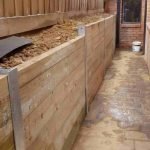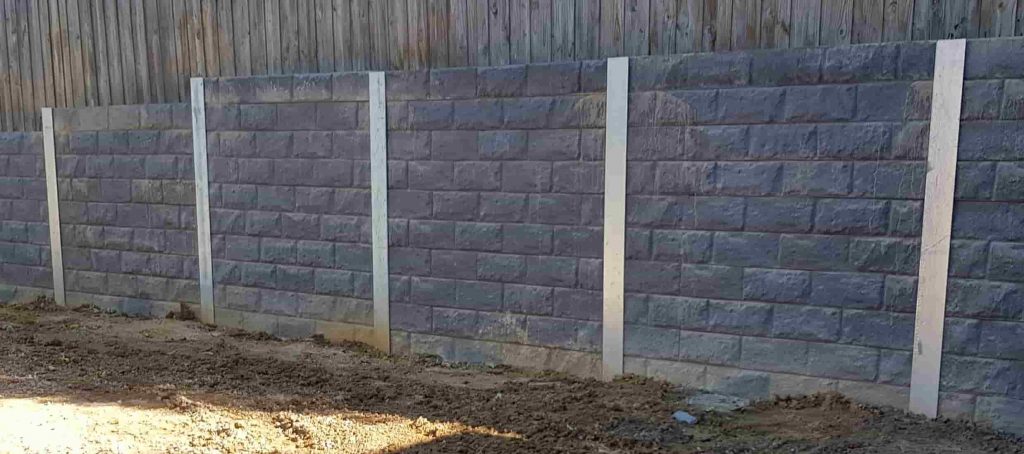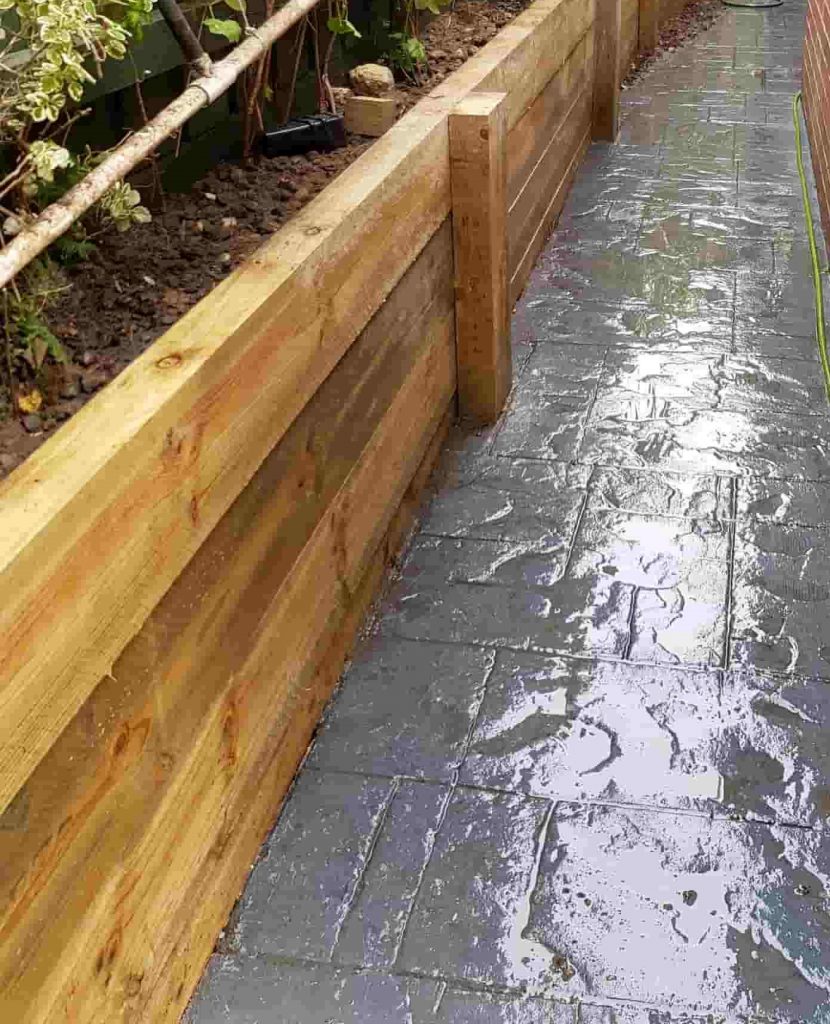Introduction
In an age where environmental concerns are at the forefront of construction practices, it's essential for experts in the field to embrace environmentally friendly techniques. The construction of keeping walls is no exception. This short article delves into Eco-Friendly Practices in Modern Retaining Wall Construction, exploring ingenious products, sustainable strategies, and finest practices that align with environmental stewardship. By understanding these techniques, specialists can not just meet regulatory requirements but also contribute favorably to their communities and ecosystems.
Eco-Friendly Practices in Modern Retaining Wall Construction
The principle of eco-friendly building and construction stands at the crossway of efficiency, sustainability, and innovation. Maintaining walls play a vital role in managing soil erosion and water drain, making them important components in landscaping and civil engineering. Nevertheless, traditional techniques frequently result in substantial environmental impacts. For that reason, adopting environmentally friendly practices becomes a requirement rather than a choice.
Understanding Sustainable Materials
Incorporating sustainable products is one of the most essential aspects of eco-friendly retaining wall construction.
Timber Sleepers: A Sustainable Resource
Timber sleepers have acquired popularity due to their natural appeal and eco-friendly characteristics. Sourced from sustainably managed forests, wood supplies an eco-friendly alternative for retaining walls.
Aesthetic Value: Timber adds warmth and natural appeal to landscapes. Flexibility: Quickly cut and formed for numerous designs. Carbon Sequestration: Wood takes in co2 throughout its growth cycle.However, it's important to select licensed lumber items to guarantee they originate from responsible sources.
Concrete Sleepers: Durable Yet Sustainable?
Concrete sleepers are another typical option for modern keeping walls. While concrete has a reputation for being ecologically hostile due to its carbon footprint throughout production, there are ways to make it more sustainable:
Recycled Materials: Using recycled aggregates can minimize the environmental impact. Low-Cement Alternatives: Developments such as geopolymer concrete can significantly decrease emissions. Longevity: Concrete's toughness decreases the requirement for regular replacements.Balancing resilience with sustainability is essential when considering concrete sleepers.
Utilizing Innovative Style Techniques
Design plays a pivotal function in ensuring that maintaining walls serve their purpose without damaging the environment.
H Beam Structures: Strength Meets Sustainability
H beam structures offer considerable benefits when building maintaining walls:
Reduced Product Use: Their style enables less product use while keeping stability. Long Lifespan: Steel H beams are highly durable, lowering future waste. Recyclability: At the end of their life cycle, H beams can be recycled into new products.Choosing steel over traditional products can cause more environmentally friendly outcomes if handled correctly.
Terracing: A Reliable Disintegration Control Strategy
Terracing involves producing stepped levels on sloped landscapes, which assists manage water runoff effectively:
Natural Drainage: It lowers surface area runoff by allowing water absorption. Soil Stability: Improves soil retention through steady elevation changes. Biodiversity Support: Terraced landscapes can support varied plant species.This technique not only help in managing erosion but likewise enhances the general aesthetic of the landscape.

Engaging Neighborhood and Stakeholders
The involvement of neighborhood members and stakeholders is crucial for effective environmentally friendly practices in retaining wall construction.
Community Workshops and Education Programs
Organizing workshops concentrated on sustainable practices can benefit both professionals and local residents:
Knowledge Sharing: Informs participants on environment-friendly products and methods. Engagement Opportunities: Fosters community investment in regional projects. Feedback Mechanism: Offers important insights into neighborhood requires relating to landscaping.By interesting communities early on, specialists can construct trust while promoting sustainability.
Collaboration with Ecological Experts
Partnering with ecological professionals guarantees tasks adhere to environmental standards:
Site Assessments: Specialists can examine soil types and disintegration threats before construction begins. Biodiversity Recommendations: Suggestions for native plant integration help maintain regional ecosystems. Sustainability Certifications: Cooperations may lead to accreditation chances that improve job credibility.Combining knowledge will lead to more educated decisions regarding product selection and design strategies.
Water Management Solutions
Effective water management is important when building maintaining walls because incorrect drain can result in structural failure or environmental degradation.

Incorporating Drain Systems
Proper drainage systems prevent water accumulation behind maintaining walls:
Perforated Pipes: Enable excess water flow far from structures. Drainage Gravel: Offers space for water movement while supporting soil around the wall. Sump Pumps: Can be installed in high-risk locations susceptible to flooding or heavy rains events.Ensuring efficient drain will extend the life-span of your retaining wall while safeguarding surrounding ecosystems.
Rainwater Harvesting Techniques
Integrating rainwater harvesting systems into your design provides numerous advantages:
Resource Efficiency: Collects rainwater for irrigation or other uses. Erosion Prevention: Decreases overflow that might otherwise worsen disintegration issues. Cost Savings: Decreases reliance on community water supplies during dry seasons.These systems promote thoughtful resource usage while improving sustainability efforts within your task scope.
Construction Best Practices
Implementing best practices throughout building ensures very little disturbance to the environment while optimizing task success rates.
Minimizing Website Disturbance
Taking steps to limit site disturbance contributes significantly towards maintaining regional communities:
1. Clearing Guidelines: Just clear needed plants; leave trees any place possible. 2. Equipment Planning: Usage smaller equipment that triggers less soil compaction or damage during operations. 3. Erosion Control Measures: Utilize silt fences or straw bales around disturbed locations till plant life grows back naturally after construction completion.
Maintaining mindful oversight throughout all phases assists secure surrounding environments effectively!

Selecting Environmentally friendly Contractors
Choosing skilled professionals dedicated to environmentally friendly practices enhances any job's structure-- literally!
Professional Experience Matters
Working with certified experts ensures adherence not only compliance however likewise effectiveness:
1. Certification Checks: Ensure specialists hold certifications associated directly towards green structure efforts & & guidelines! 2. Portfolio Review: Evaluate previous projects showing sustainable methods utilized successfully! 3. Testimonials & Reviews: Look for feedback from previous clients concerning specialist efficiency & & devotion toward decreasing environmental impacts!
Investing time upfront will yield long-lasting benefits for everybody involved!
Innovative Landscaping Solutions
Once your retaining wall is constructed properly using eco-friendly practices; think about incorporating extra landscaping options even more boosting both visual appeal & & functionality!
Native Plant Integration
Using native plants promotes biodiversity whilst decreasing maintenance requires down-the-line:
- Drought Resistance: Native types need less watering once established compared non-native alternatives! Habitat Development: These plants supply shelter food resources needed wildlife flourish nearby! Soil Health Improvement: Native roots penetrate deeper enhancing general soil quality naturally over time!
Embracing nature-based solutions matches existing structures considerably benefiting both homeowner communities alike!
Monitoring Ecological Impact Over Time
After completion; keeping an eye on continuous effects connected with new building and constructions should remain top-of-mind progressing:
- Regular assessments examining efficiency durability efficiency accomplished through carried out techniques! Adjustments made based upon findings guaranteeing continued positioning towards sustainability goals set at first throughout planning stages!
Taking proactive actions guarantees we're held liable maintaining duty towards promoting environmental principles guaranteed at outset!
FAQs About Eco-Friendly Practices in Modern Retaining Wall Construction
Q1: What products are thought about eco-friendly for constructing keeping walls?
A1: Sustainable options consist of lumber sleepers sourced from licensed forests, recycled concrete sleepers utilizing low-cement alternatives like geopolymer concrete, in addition to H beam structures made mainly from recyclable steel resources which reduce waste generation substantially over time!
Q2: How do I know if my professional follows eco-friendly practices?
A2: Look for certifications https://tuffstuffretainingwalls.com.au/ related particularly towards green structure initiatives; review their portfolios showcasing previous tasks demonstrating dedication toward reducing unfavorable environmental impacts along customer testimonials reflecting fulfillment levels accomplished throughout processes carried out collectively!
Q3: What are some advantages of utilizing wood sleepers rather of concrete?
A3: Timber sleep offers aesthetic appeal along versatility accommodating varying designs easily while being eco-friendly so they won't contribute landfill waste long term! In addition-when sourced sustainably-they help combat environment modification by soaking up carbon dioxide throughout development cycles!
Q4: Why is proper drain critical when building a keeping wall?
A4: Poorly handled drain leads potential accumulation excess moisture behind structure running the risk of failure possibly undermining surrounding landscapes causing serious damage including erosion taking place nearby-- for this reason investing effort upfront pays dividends later ensuring enduring stability provided styles executed efficiently throughout build-outs procedure too!
Q5: How does rainwater gathering fit into eco-friendly practices?
A5: Rainwater harvesting promotes resource effectiveness by gathering rainwater used watering purposes lowering dependence community supplies especially advantageous drought-prone areas reducing total impact resources taken in in your area too ensuring healthier environments thrive along with developed areas constructed purposefully developed assistance sustain life within them too over time continuing advantage generations followed us all!
Q6: Can I integrate native plants into my landscape alongside my new keeping wall?
A6: Absolutely! Incorporating native plants enhances biodiversity promotes habitat creation decreases upkeep requirements because these species adapted regional environments making them resilient needing less watering & care over longer terms yielding worthwhile outcomes visually functionally alike contributing favorably overall health ecosystem preserved here henceforth too preferably matched post-construction stage when completed successfully achieved together harmoniously created collaboratively driven efforts aimed attaining shared goals eventually benefitting everybody included throughout journey taken together engaged attentively every action way forward onward aiming produce better tomorrow awaits us ahead certainly always making every effort improve experiences shared equally enhance lives collectively every opportunity we get naturally gifted chances offered all of us delight in embrace cherish totally without hesitation whatsoever within reach grasp either way journey continues onward forevermore ...
Conclusion
In closing, welcoming eco-friendly practices in modern retaining wall building and construction isn't simply about compliance; it's a dedication towards nurturing our world while meeting human needs sustainably! By selecting innovative products such as wood sleepers or recycled concrete options alongside efficient design strategies including H beam structures integrated reliable landscaping solutions incorporating native flora we create courses leading brighter futures awaiting us all eagerly-- paving methods forward together collaboratively devoted achieving typical objectives protecting precious resources left behind generations yet unborn today tomorrow next century beyond certainly holds unlimited possibilities awaiting awareness awaiting discovery unveiling profound marvels revelations exist surprise sight open minds hearts prepared embrace transformations needed true modification happen remains within grasp each specific collective hands prepared take steps necessary pave paths leads progress advance together harmony balance stewardship shared duties delegated upon us supported valued cared deeply earnestly regards forevermore!